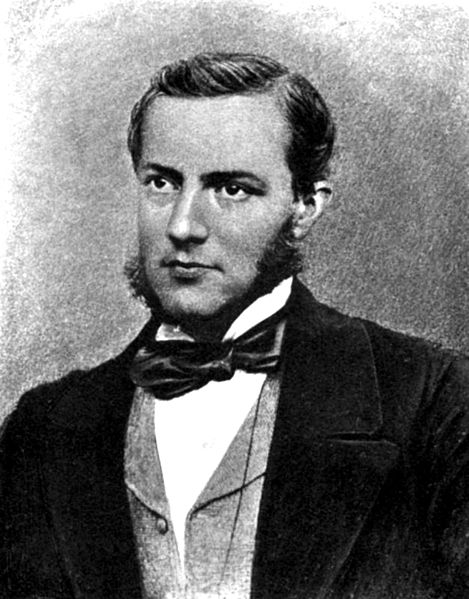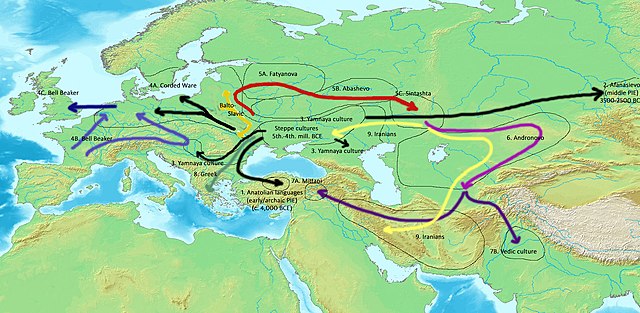Armenian mythology originated in ancient Indo-European traditions, specifically Proto-Armenian, and gradually incorporated Hurro-Urartian, Mesopotamian, Iranian, and Greek beliefs and deities.
A bronze head of Aphrodite from Satala sometimes identified as Anahit
Side view of the Temple of Garni.
Aralez on the battlefield.
Shamiram stares at the corpse of Ara the Beautiful (painting by Vardges Sureniants, 1899).
Proto-Indo-European mythology
Proto-Indo-European mythology is the body of myths and deities associated with the Proto-Indo-Europeans, speakers of the hypothesized Proto-Indo-European language. Although the mythological motifs are not directly attested – since Proto-Indo-European speakers lived in preliterate societies – scholars of comparative mythology have reconstructed details from inherited similarities found among Indo-European languages, based on the assumption that parts of the Proto-Indo-Europeans' original belief systems survived in the daughter traditions.
Trundholm sun chariot, Nordic Bronze Age, c. 1600 BC
Portrait of Friedrich Max Müller, a prominent early scholar on the reconstruction of Proto-Indo-European religion and a proponent of the Meteorological School.
Scheme of Indo-European language dispersals from c. 4000 to 1000 BCE according to the widely held Kurgan hypothesis. Center: Steppe cultures 1 (black): Anatolian languages (archaic PIE) 2 (black): Afanasievo culture (early PIE) 3 (black) Yamnaya culture expansion (Pontic-Caspian steppe, Danube Valley) (late PIE) 4A (black): Western Corded Ware 4B-C (blue & dark blue): Bell Beaker; adopted by Indo-European speakers 5A-B (red): Eastern Corded ware 5C (red): Sintashta (proto-Indo-Iranian)
Yama, an Indic reflex of *Yemo, sitting on a water buffalo.








